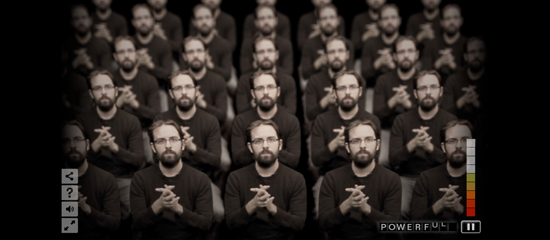There is a lot of anxiety about artificial intelligence in the arts, which can only be exacerbated by a question such as this, from a December 2, 2022 news item on ScienceDaily,
Can artificial intelligence write better poetry than humans?
The gap between human creativity and artificial intelligence seems to be narrowing. Previous studies have compared AI-generated versus human-written poems and whether people can distinguish between them.
…
The answer doesn’t seem all that comforting and a December 2, 2022 Kyoto University press release (also on EurekAlert but published December 1, 2022), which originated the news item, provides more detail, some of it disconcerting,
Now, a study led by Yoshiyuki Ueda at Kyoto University Institute for the Future of Human and Society [Japan], has shown AI’s potential in creating literary art such as haiku — the shortest poetic form in the world — rivaling that of humans without human help.
Ueda’s team compared AI-generated haiku without human intervention, also known as human out of the loop, or HOTL, with a contrasting method known as human in the loop, or HITL.
The project involved 385 participants, each of whom evaluated 40 haiku poems — 20 each of HITL and HOTL — plus 40 composed entirely by professional haiku writers.
“It was interesting that the evaluators found it challenging to distinguish between the haiku penned by humans and those generated by AI,” remarks Ueda.
From the results, HITL haiku received the most praise for their poetic qualities, whereas HOTL and human-only verses had similar scores.
“In addition, a phenomenon called algorithm aversion was observed among our evaluators. They were supposed to be unbiased but instead became influenced by a kind of reverse psychology,” explains the author.
“In other words, they tended to unconsciously give lower scores to those they felt were AI-generated.”
Ueda points out that his research has put a spotlight on algorithm aversion as a new approach to AI art.
“Our results suggest that the ability of AI in the field of haiku creation has taken a leap forward, entering the realm of collaborating with humans to produce more creative works. Realizing the existence of algorithmic aversion will lead people to re-evaluate their appreciation of AI art.”
Here’s a link to and a citation for the paper,
Does human–AI collaboration lead to more creative art? Aesthetic evaluation of human-made and AI-generated haiku poetry by Jimpei Hitsuwari, Yoshiyuki Ueda, Woojin Yun, Michio Nomura. Computers in Human Behavior Volume 139, February 2023, 107502 DOI: https://doi.org/10.1016/j.chb.2022.107502 Available online 4 October 2022, Version of Record 22 October 2022.
This paper is behind a paywall.
For those unfamiliar with Matsuo Bashō, he’s considered Japan’s most famous poet from the Edo period and Japan’s greatest master of haiku according to his Wikipedia entry. You can also find out more about Basho at the Poetry Foundation.



